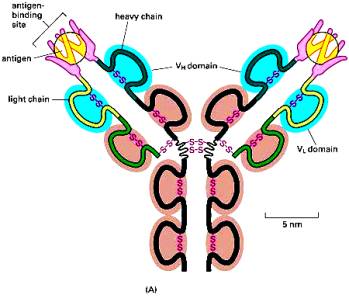CELLULAR RESPIRATION ACTIVITY 9 1 THE SUMMARY FORMULA FOR
AN ORIGINAL METHOD OF EDGE DETECTION BASED ON CELLULARAPPUNTI DI BIOLOGIA LA DIVISIONE CELLULARE PROFSSA PATRIZIA MOSCATELLI
ARMORLOC® CELLULAR CONCRETE BLOCK HAND PLACE SPECIFICATION FOR EROSION
AUTOMATIC ACCURATE QUANTIFICATION OF CELLULAR NUCLEI IN THE OPMDAFFECTED
CELLULAR RESPIRATION ACTIVITY 9 1 THE SUMMARY FORMULA FOR
CELLULAR RESPIRATION AND PHOTOSYNTHESIS SECTION 1 ENERGY IN LIVING
Cellular Respiration Activity 9
1. The summary formula for cellular respiration is
C6H12O6 6 O2 6 CO2 6 H2O Energy
|
a. Where is each of the reactants used in the overall process?
|
b. Where is each of the products produced in the overall process? |
|||
|
C6H12O6 6 O2 6 CO2 6 H2O Energy
|
||||
|
Glycolysis
|
Oxidative phosphorylation |
Pyruvate Acetyl CoA and Krebs cycle |
Oxidative phosphorylation |
ATP/glucose Glycolysis (2), Krebs (2 GTP), oxidative phosphorylation (up to 34) |
2. In cellular respiration, the oxidation of glucose is carried out in a controlled series of reactions. At each step or reaction in the sequence, a small amount of the total energy is released. Some of this energy is lost as heat. The rest is converted to other forms that can be used by the cell to drive or fuel coupled endergonic reactions or to make ATP.
|
a. What is/are the overall function(s) of glycolysis? |
b. What is/are the overall function(s) of the Krebs cycle? |
c. What is/are the overall function(s) of oxidative phosphorylation? |
|
Oxidation
of glucose to |
Oxidation
of pyruvate/acetyl CoA to carbon dioxide. Generates 2 GTP, 6 NADH,
and |
Oxidation of NADH and FADH2to H2O (and NAD or FAD). Generates H ion concentration gradient and therefore ATP. |
|
3. Are the compounds listed here used or produced in:
|
Glycolysis? |
The Krebs cycle? |
Oxidative phosphorylation? |
|
Glucose |
Used |
|
|
|
O2 |
|
|
Used |
|
CO2 |
|
Produced |
|
|
H2O |
|
|
Produced |
|
ATP |
Produced |
Produced(GTP) |
Produced |
|
|
Produced & used |
Used |
Used |
|
NADH |
Produced |
Produced |
Used |
|
NAD |
Used |
Used |
Produced |
4. The cell’s supply of ADP, P i, and NAD is finite (limited). What happens to cellular respiration when all of the cell’s NAD has been converted to NADH?
I f
NAD is unavailable, the cell is unable to conduct any processes that
involve the conversion of NAD
to NADH. Because both glycolysis and the Krebs cycle produce NADH,
both of these processes shut down when there is no available.NAD.
f
NAD is unavailable, the cell is unable to conduct any processes that
involve the conversion of NAD
to NADH. Because both glycolysis and the Krebs cycle produce NADH,
both of these processes shut down when there is no available.NAD.
5. If the Krebs cycle does not require oxygen, why does cellular respiration stop after glycolysis when no oxygen is present?
When no oxygen is present, oxidative phosphorylation cannot occur. As a result, the NADH produced in glycolysis and the Krebs cycle cannot be oxidized to NAD. When no NAD is available, pyruvate cannot be converted to the acetyl CoA that is required for the Krebs cycle.
6. Many organisms can withstand periods of oxygen debt (anaerobic conditions). Yeast undergoing oxygen debt converts pyruvic acid to ethanol and carbon dioxide. Animals undergoing oxygen debt convert pyruvic acid to lactic acid. Pyruvic acid is fairly nontoxic in even high concentrations. Both ethanol and lactic acid are toxic in even moderate concentrations. Explain why this conversion occurs in organisms.
As noted in question 4, when no NAD is available, even glycolysis stops. No ATP will be produced and the cell (or organism) will die. The conversion of pyruvic acid (pyruvate) to lactic acid (or ethanol) requires the input of NADH and generates NAD. This process, called fermentation, allows the cell to continue getting at least 2 ATP per glucose.
7. How efficient is fermentation? How efficient is cellular respiration? Remember that efficiency is the amount of useful energy (as ATP) gained during the process divided by the total amount of energy available in glucose. Use 686 kcal as the total energy available in 1 mol of glucose and 8 kcal as the energy available in 1 mol of ATP.
|
Efficiency of fermentation |
Efficiency of aerobic respiration |
|
8 kcal/mole of ATP x 2 ATP 16 kcal
16 kcal/2 moles of ATP 2.3% 686 kcal/mole of glucose
|
8 kcal/mole of ATP x 38 ATP (maximum) 304 kcal
304 kcal/38 moles of ATP 44.3% 686 kcal/mole of glucose |
8. a. Why can’t cells store large quantities of ATP? (Hint: Consider both the chemical stability of the molecule and the cell’s osmotic potential.)
ATP is highly reactive at normal body temperatures and therefore difficult for cells to store for any period of time. (In the lab, ATP is usually stored at very low temperatures, for example, at –20°C.) In addition, ATP is a relatively small molecule. As a result, if cells could store high concentrations of ATP, their osmotic potential would change. This is also why cells don’t store glucose. The cells would become hypertonic to the fluid around them and could pick up enough water to burst.
b. Given that cells can’t store ATP for long periods of time, how do they store energy?
Instead of storing ATP, cells tend to store energy as fats, oils, or starches. These are very large molecules and, as a result, do not have as great an effect on osmotic potential.
9. To make a 5 M solution of hydrochloric acid, we add 400 ml of 12.5 M hydrochloric acid to 600 ml of distilled water. Before we add the acid, however, we place the flask containing the distilled water into the sink because this solution can heat up so rapidly that the flask breaks. How is this reaction similar to what happens in chemiosmosis? How is it different?
|
Similarities |
Differences |
|
In both processes, as we add the acid to the water, we are generating a difference in concentration between the two, or a H ion gradient. As the H ions flow down this gradient (that is, mix with the water), they release energy in the form of heat. |
Chemiosmosis also sets up a H ion concentration gradient; however, the energy release is controlled as the H ions pass through the ATP synthase molecules and ATP is generated. Some energy is lost as heat, but much of it is captured in the chemical bonds of ATP. |
10.
If it takes 1,000 g of glucose to grow 10 g of an anaerobic
bacterium, how many grams of glucose would it take to grow 10 g of
that same bacterium if it was respiring aerobically? Estimate your
answer. For example, if it takes X amount of glucose to grow
10 g of anaerobic bacteria, what factor would you have to multiply or
divide X by to
grow 10 g of the same bacteria
aerobically? Explain how you arrived at your answer.
Aerobic respiration can produce a maximum of 38 ATP per glucose molecule. Anaerobic respiration can produce 2 ATP per glucose molecule. As a result, aerobic respiration is about 19 times more efficient. Therefore, you would need 19 times less glucose if respiring aerobically: 1,000 g of glucose divided by 19 equals approximately 50 g of glucose required if respiration is aerobic.
11. Mitochondria isolated from liver cells can be used to study the rate of electron transport in response to a variety of chemicals. The rate of electron transport is measured as the rate of disappearance of O2 from the solution using an oxygen-sensitive electrode.
How can we justify using the disappearance of oxygen from the solution as a measure of electron transport?
Use the balanced equation for aerobic respiration:
C6H12O6 6 O2 6 CO2 6 H2O Energy
If the final energy produced is 38 ATP, then for every 6 oxygen molecules consumed (or 6 moles of oxygen consumed), we expect 38 molecules of ATP (or moles of ATP) to be produced.
12. Humans oxidize glucose in the presence of oxygen. For each mole of glucose oxidized, about 686 kcal of energy is released. This is true whether the mole of glucose is oxidized in human cells or burned in the air. A calorie is the amount of energy required to raise the temperature of 1 g of water by 1°C; 686 kcal 686,000 cal. The average human requires about 2,000 kcal of energy per day, which is equivalent to about 3 mol of glucose per day. Given this, why don’t humans spontaneously combust?
As noted in question 9, during cellular respiration, the energy from the oxidation of glucose is not released all at once (as it is in burning). Instead, each of the reactions in glycolysis, the Krebs cycle, and electron transport releases a small amount of the energy stored in the molecules. Much of this energy is captured as NADH, FADH2, ATP, or GTP. Some is lost as heat; however, the heat loss also occurs at each step and not all at once.
CELLULAR TELEPHONE AND SOCIAL MEDIA SUBPOENA GUIDE – UPDATED
CELLULAR THERAPY PRODUCT REQUEST REQUESTING FACILITY FROEDTERT HOSPITAL CHILDREN’S
CELLULAR TRANSPORT REVIEW DIAGRAMS ACTIVE TRANSPORT EXAMPLES DIFFUSION OSMOSIS
Tags: activity 9, formula, respiration, cellular, activity, summary
- INKRAFTTRETEDATUM 19990101 LANGTITEL BUNDESGESETZ ÜBER DIE UMWELTKONTROLLE UND DIE
- MAORI CUSTOMARY TITLE IN FORESHORE AND SEABED COMMENT ON
- (PHOTOGRAPH) STAFF APPLICATION FORM ACADEMIC YEAR FOR THE MOBILITY
- CDFA DAIRY MARKETING HAUL SURVEY A NEW FORMAT HAS
- FOND ZA ZAŠTITU OKOLIŠA I ENERGETSKU UČINKOVITOST OBRAZAC 7
- AP STATISTICS FINAL PROJECT RUBRIC EXCELLENT (100) GOOD (90)
- TEST 1 TILT DISPLAY ACCURACY TEST CRITERIA MET 41)
- 54 BAB IV HASIL ANALISA DAN PEMBAHASAN 41 ANALISA
- TENTO DOKUMENT OBSAHUJE PROHLÁŠENÍ O PŘÍSTUPNOSTI WEBOVÝCH STRÁNEK MATEŘSKÉ
- ESTRÉS OXIDATIVO DE WIKIPEDIA LA ENCICLOPEDIA LIBRE SALTAR A
- NAJČEŠĆA PITANJA I ODGOVORI 1 TREBAJU LI SE SVE
- YASAL DAYANAK 10 ARALIK 2010 TARIH VE 27781
- TÍTULO DE LA PONENCIA TÍTULO DE LA PONENCIA EJE
- HRVATSKO NACIONALNO VIJEĆE I NFORMATOR O RADU HRVATSKO NACIONALNO
- WWWNAVARRAES ORDEN FORAL 32607 DE 12 DE SEPTIEMBRE DE
- 0 PERFIL PROFESIONAL ANGELA GÓMEZ RODRÍGUEZ CUENTA CON
- OVAL 1 NOTICE OF CEASING TO ACT FORM 9
- ANA SUDAREVIĆ DIPL KNJIŽNIČARKA OŠ DUBOVAC KARLOVAC 1 TKO
- C HINESE ZODIAC CHINESE ASTROLOGY IS RELATED TO THE
- SUMARIO I DE LAS FUENTES EN GENERAL 1 CONCEPTO
- ADAKAVO BENDRUOMENĖ 179727332 LIETUVOS KAIMO PLĖTROS 20072013
- DEPARTMENT OF WORKFORCE DEVELOPMENT WORKER’S COMPENSATION DIVISION 201
- 1 2 GESTIÓN JURÍDICA 3 CÓDIGO 2TRGJUF39 4 FECHA
- TURQUÍA WTTPRS259 PÁGINA ORGANIZACIÓN MUNDIAL DEL COMERCIO RESTRICTED WTTPRS259
- FEBRUARY 2012 NEW INSPIRATION ORGANIC REED DIFFUSER NEOM LUXURY
- C OOL COWS DYNAMITE DAIRY IN THIS EXHIBIT FROM
- 89 BILLING ACCOUNTS RECEIVABLE NAVIGATION OVERVIEW IN MANY
- JOINT SESSION OF THE EXECUTIVE BOARDS OF THE
- ČESKÁ REPUBLIKA – KANCELÁŘ POSLANECKÉ SNĚMOVNY V SOULADU
- 10 DIÁLOGO DE LA POESÍA FLOR Y CANTO1 DOCTOR
STAJ DOSYASI HAZIRLAMA REHBERİ STAJ DOSYASININ HAZIRLANMASI 1 ZORUNLU
 PROPERTY INSURANCE INCIDENT REPORT FORM LOSS OR DAMAGE THIS
PROPERTY INSURANCE INCIDENT REPORT FORM LOSS OR DAMAGE THIS Course Syllabus Note Individual Instructors Complete the Asterisked ()
Course Syllabus Note Individual Instructors Complete the Asterisked ()SOLICITUD DE INCLUSIÓN EN EL CENSO ESPECIAL DE VOTO
 STANDARD OPERATING PROCEDURES WG TEMPLATE SOP STRUCTURE AS
STANDARD OPERATING PROCEDURES WG TEMPLATE SOP STRUCTURE ASGHID ORIENTATIV SPLIT TVA 1 INCASARI CASH DIFERENTA DINTRE
 UNIVERZITA KOMENSKÉHO V BRATISLAVE AKADEMICKÝ INFORMAČNÝ SYSTÉM POSLANIE EMAILU
UNIVERZITA KOMENSKÉHO V BRATISLAVE AKADEMICKÝ INFORMAČNÝ SYSTÉM POSLANIE EMAILUUZUN MESAFE KOŞULARINDA BESLENME DAYANIKLILIK VÜCUDUN YORULMADAN UZUN SÜRE
 8 FELSŐPÁHOK KÖZSÉG ÖNKORMÁNYZATA 8395 FELSŐPÁHOK SZENT I U
8 FELSŐPÁHOK KÖZSÉG ÖNKORMÁNYZATA 8395 FELSŐPÁHOK SZENT I UŠTEVILKA 4901202047 DATUM 17 1 2020 ZADEVA IZVAJANJE SKLEPA
 VLOŽENÍ STUDIJNÍCH MATERIÁLŮ KE KURZU 1 KLIKNĚTE NA
VLOŽENÍ STUDIJNÍCH MATERIÁLŮ KE KURZU 1 KLIKNĚTE NA FAQ HOW TO USE THE APP 1 WHAT CAN
FAQ HOW TO USE THE APP 1 WHAT CAN 10 LA ATENCIÓN 1 INTRODUCCIÓN 2 LA PSICOLOGÍA DE
10 LA ATENCIÓN 1 INTRODUCCIÓN 2 LA PSICOLOGÍA DE DIARIO OFICIAL DE LA FEDERACIÓN 01 MARZO 2013 SECRETARÍA
DIARIO OFICIAL DE LA FEDERACIÓN 01 MARZO 2013 SECRETARÍAFICHA DE LIBRO NOMBRE Y APELLIDOS NIF DIRECCIÓN CÓDIGO
 TÉCNICA INMUNOHISTOQUIMICA CONJUNTO DE TÉCNICAS QUE HACEN USO DE
TÉCNICA INMUNOHISTOQUIMICA CONJUNTO DE TÉCNICAS QUE HACEN USO DE?que son los Axolotes? los Axolotes son Salamandras Acuáticas
 EQUAL OPPORTUNITIES RECRUITMENT MONITORING FORM STRICTLY CONFIDENTIAL ACTIVITY ALLIANCE
EQUAL OPPORTUNITIES RECRUITMENT MONITORING FORM STRICTLY CONFIDENTIAL ACTIVITY ALLIANCE PROYECTO DE DECLARACIÓN PARLASUR Nº… POR LA CUAL SE
PROYECTO DE DECLARACIÓN PARLASUR Nº… POR LA CUAL SE ASSIGNMENT BUILD A SLIDESHOW TIMELINE IN KIDPIX USE THE
ASSIGNMENT BUILD A SLIDESHOW TIMELINE IN KIDPIX USE THE